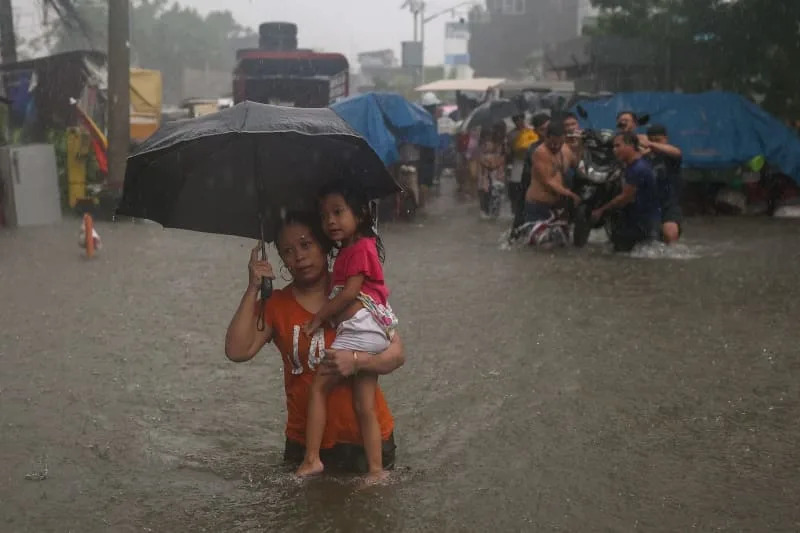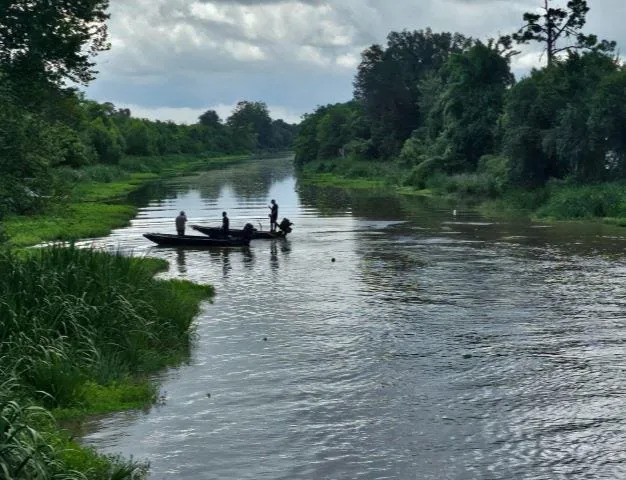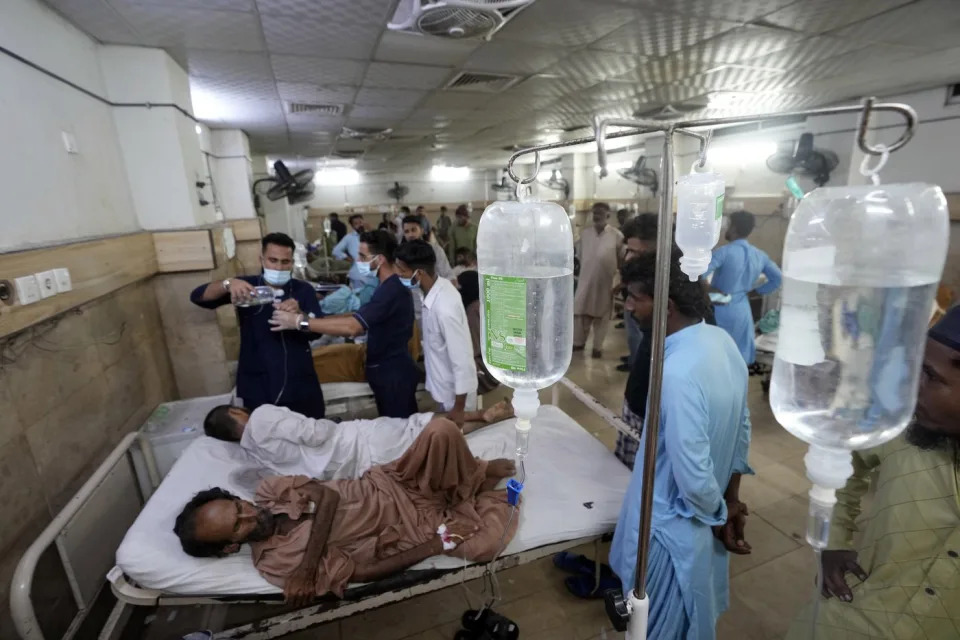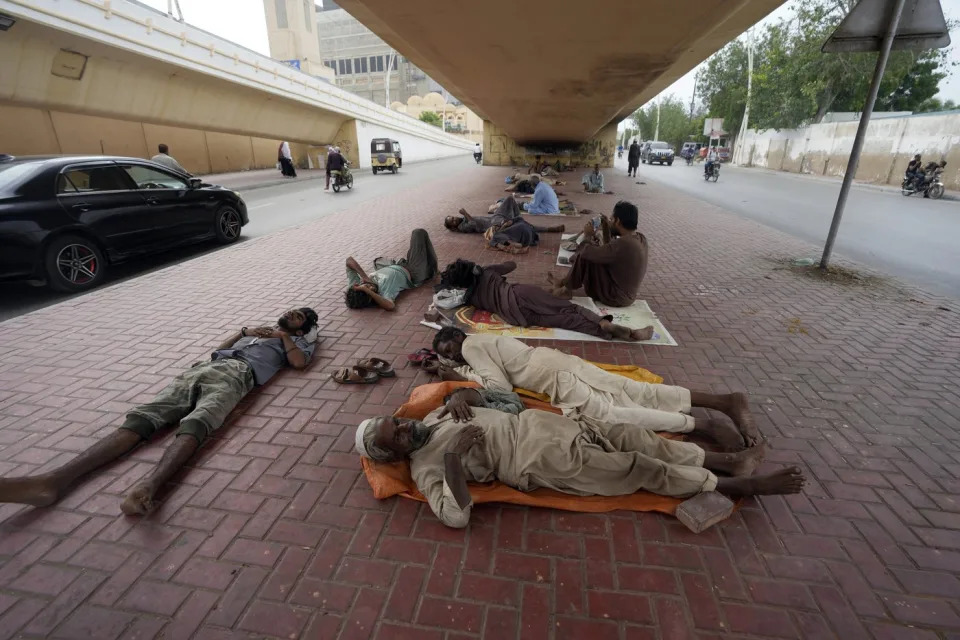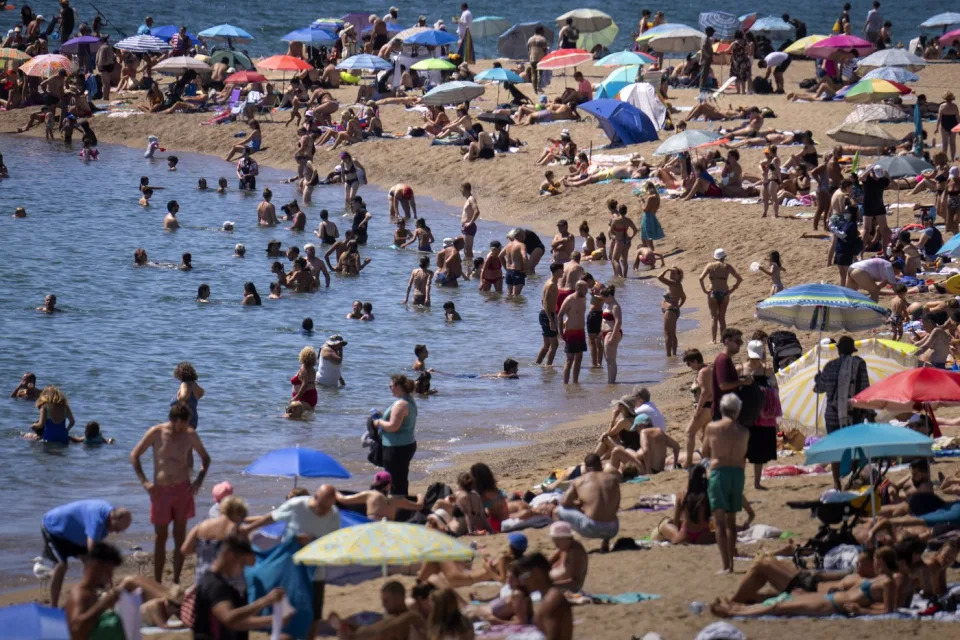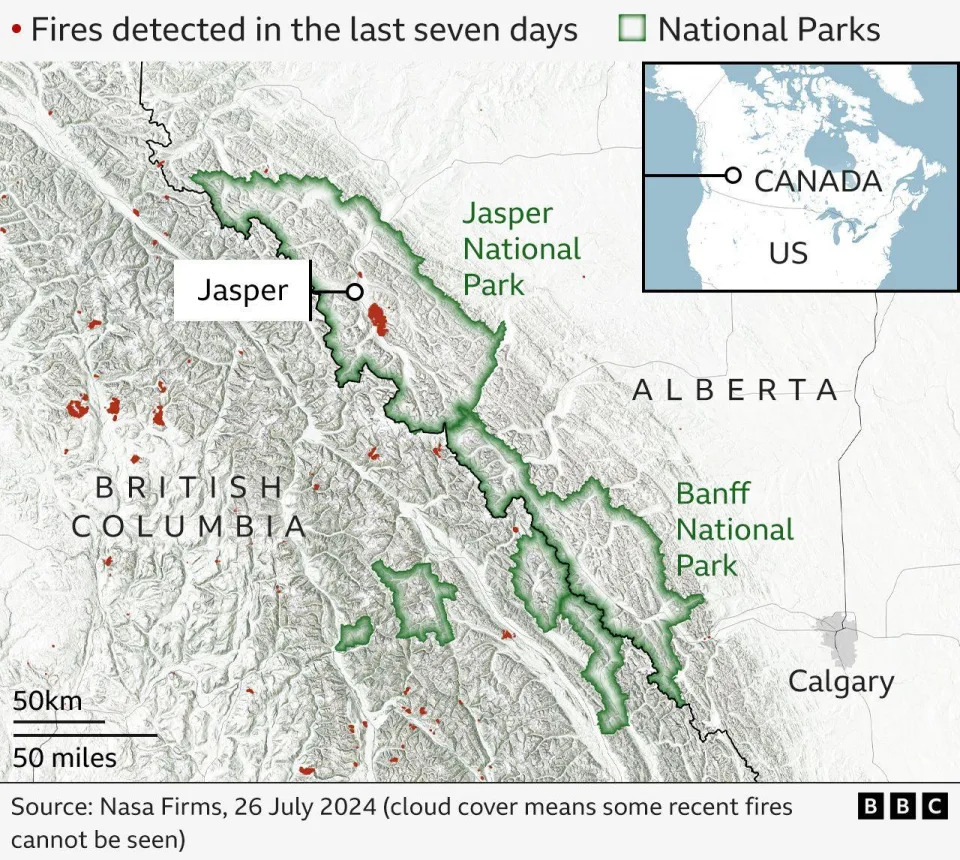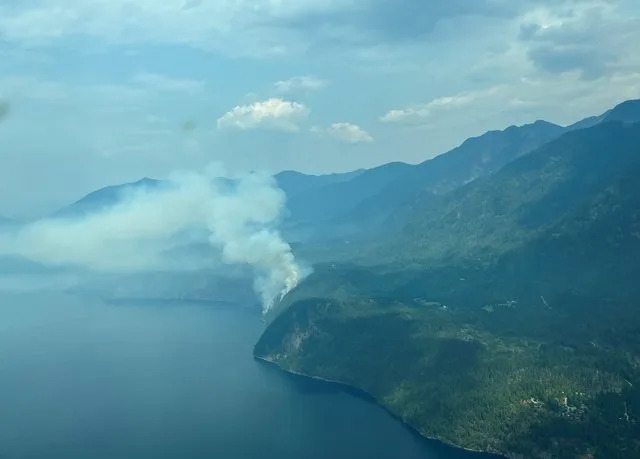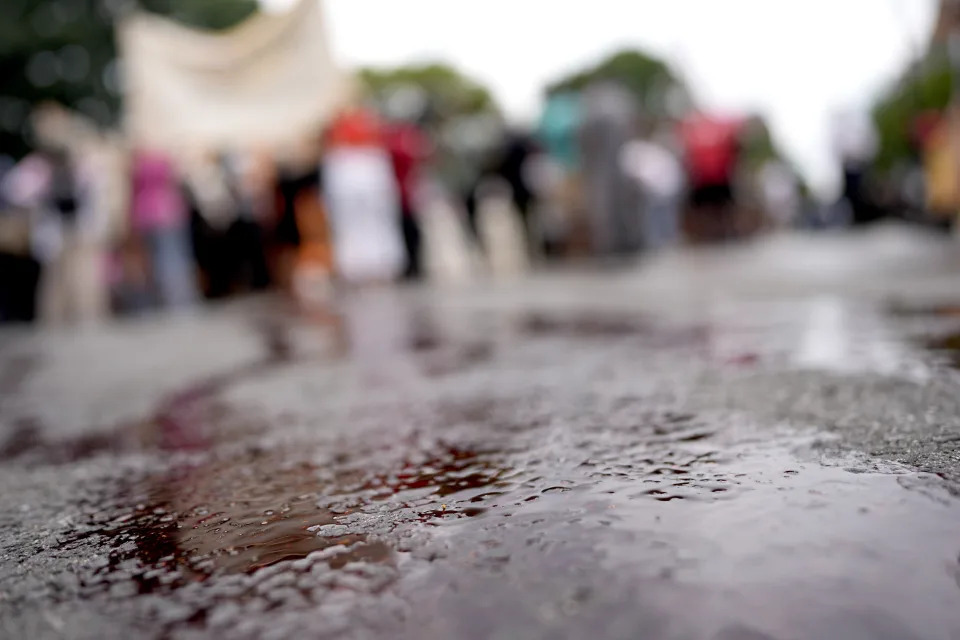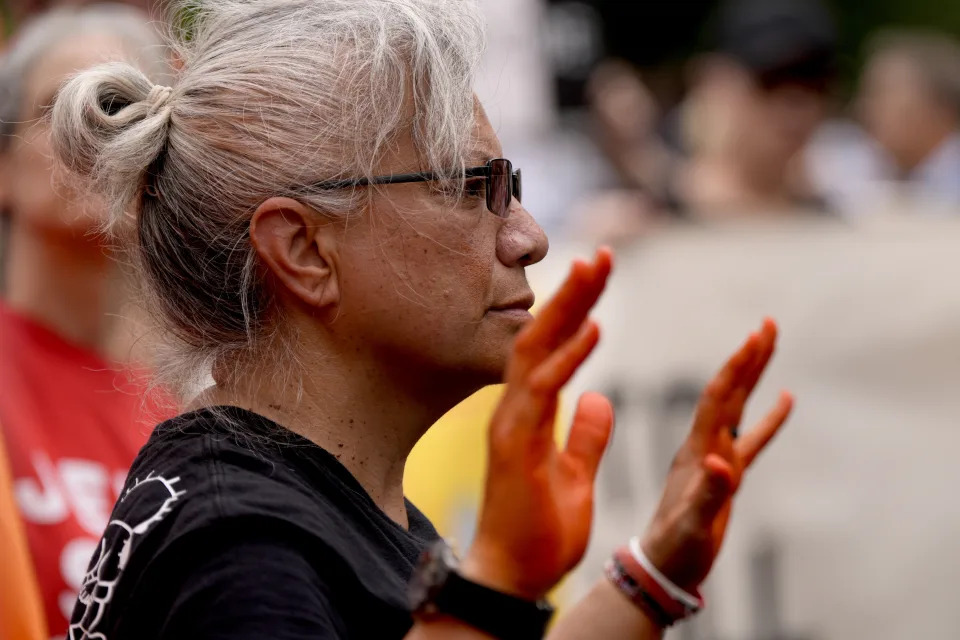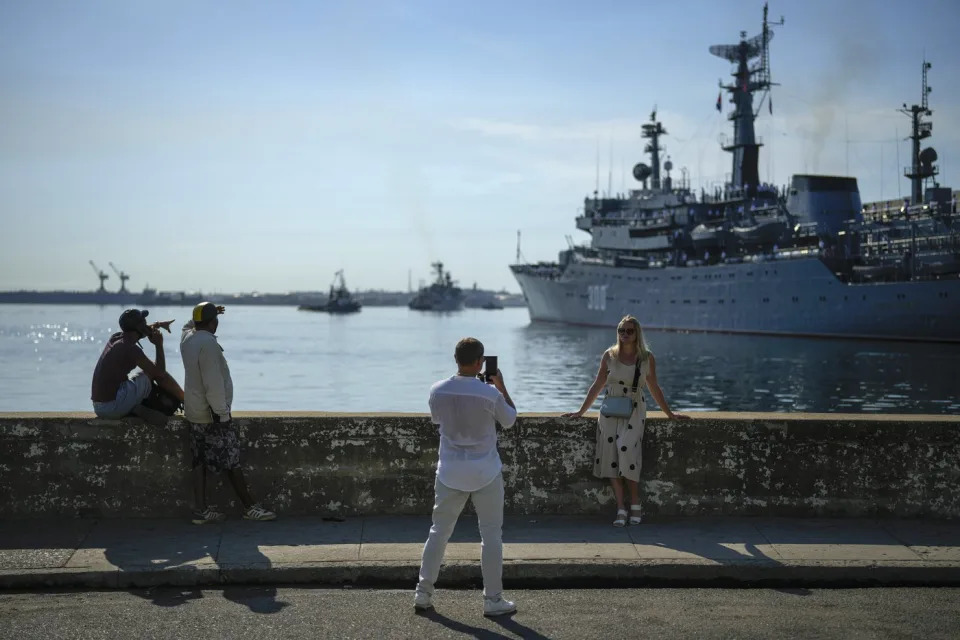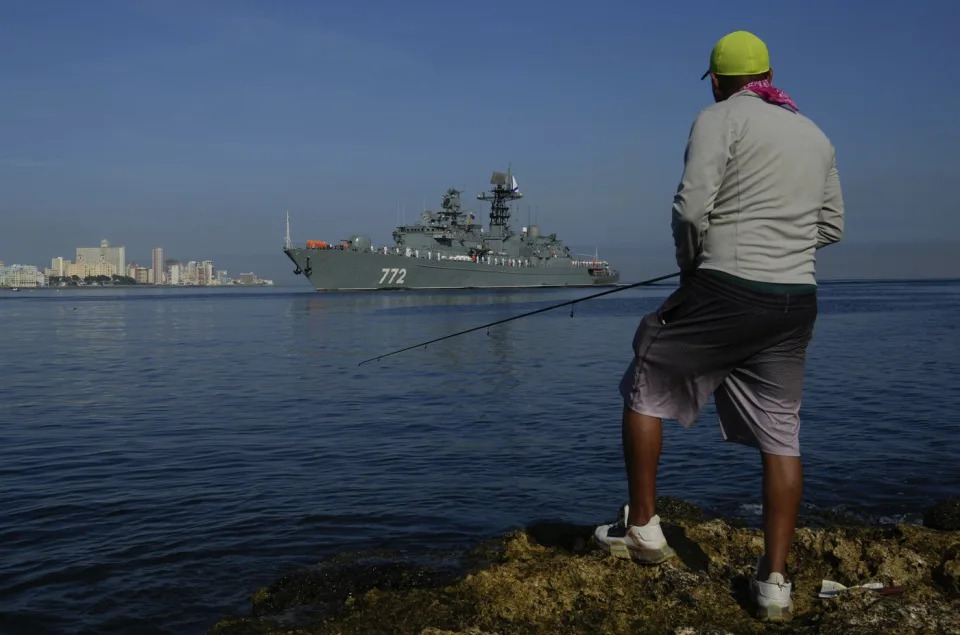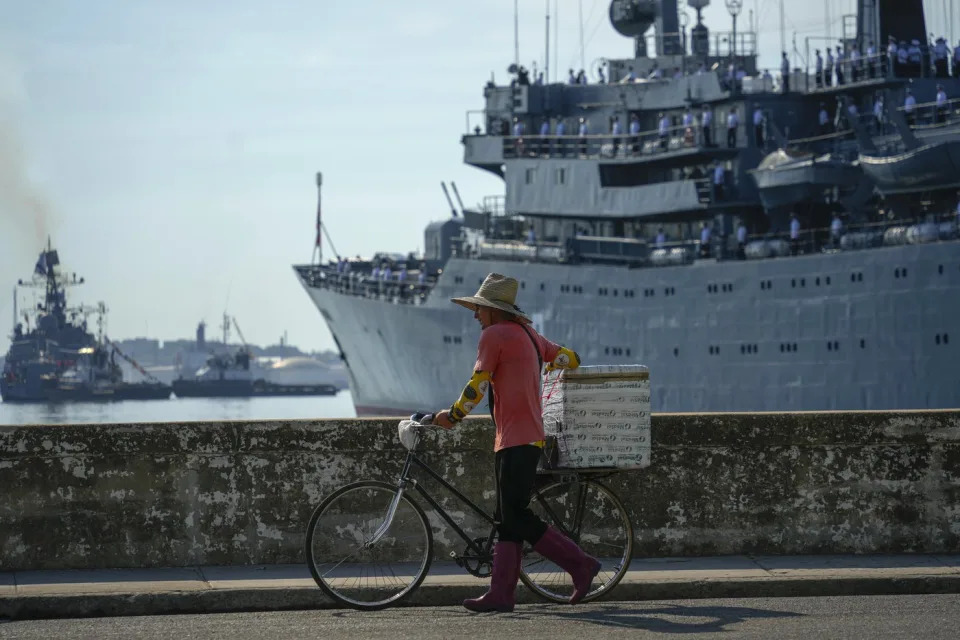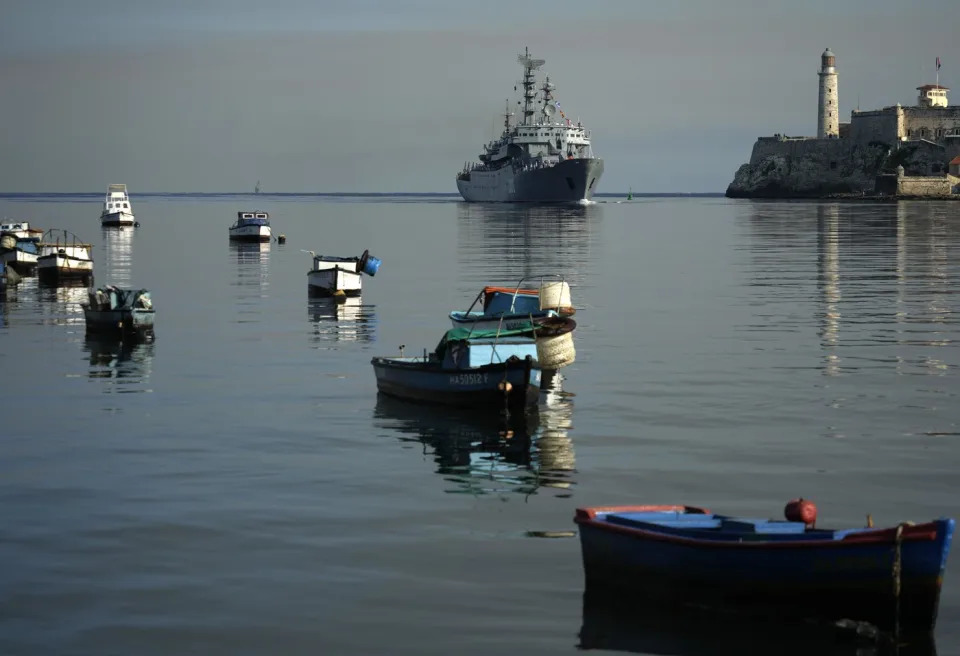Ayelet Sheffey
Sun, July 28, 2024
With the GOP pushing to block the SAVE student-loan repayment plan, she's considering voting for a Democrat.
She said the lower payments through SAVE allowed her to afford medicine, groceries, and gas.
Rebecca Hill isn't a fan of either political party right now, but the chaos surrounding student debt might make her vote Democrat.
Hill, 61, is an independent voter, and in the past, she said she has leaned to the right — she voted for Trump in the 2016 election.
Now, however, Hill is reconsidering her vote. She has nearly $50,000 in student loans, according to documents reviewed by Business Insider, and she enrolled in President Joe Biden's SAVE student-loan repayment plan, intended to lower borrowers' payments based on their income and give them a shorter timeline to debt cancellation.
That's the same plan that's currently blocked in court as GOP state attorneys general are pushing to permanently stop it from being implemented.
"Every time something new comes out, I'm a nervous wreck," Hill told BI of news surrounding the fate of the SAVE plan.
"When can I start thinking about it being safe to retire? I'm getting old, and I'm tired, and I've already had one hip replaced," she added. "I want to be able to just breathe, but retiring and having to pay for student loans when I'm not even working anymore and paying most of my Social Security to student loans, it's ridiculous. It's extremely stressful. I feel like they're getting ready to pull the rug out from under us again."
After two separate groups of GOP state attorneys general filed lawsuits to block SAVE earlier this year, federal courts temporarily halted parts of the plan. The 10th Circuit later ruled some SAVE provisions could move forward, but most recently, the 8th Circuit blocked the plan in its entirety, pending a final decision.
One of the key arguments in the lawsuits is the cost of the plan to taxpayers. The case led by Missouri's attorney general cited an estimate from the University of Pennsylvania's Wharton School that found the SAVE plan could cost $475 billion over 10 years.
The lawsuits have thrown 8 million borrowers on SAVE, including Hill, into financial limbo. Hill said the uncertainty with her student loans is forcing her to push back her timeline to retire. She's a teacher and has loans because she went back to school in 2009 to get her teaching degree, which she funded through grants, scholarships, and student loans.
While she landed a job in her desired field, it wasn't easy for her to make around $300 monthly payments on the income-driven repayment plan due to her other expenses. The SAVE plan, however, brought her payments down to just over $120, and she's worried that if the lawsuits succeed, her payments will surge.
"I am scared they aren't hearing us," Hill said. "The Democratic Party, and I'm not a left leaner, but at least they're doing something about it. Republicans are scaring the crap out of me."
'It's just very frustrating'
When Hill was placed on the SAVE plan last summer, she felt immediate relief and felt that, for once, she could afford her student-loan payments.
The lower payments have allowed her to save up for a new car, and she doesn't have to worry about affording her medication or daily expenses.
"I don't have to worry about, 'Oh, do I buy medication? Or how can I skip my groceries this week?' There are repairs to the house that I'm able to do. I was able to get the roof replaced and things like that," Hill said. "Am I going to have enough gas to go to work? It's ridiculous the stress it just takes off in having that extra buffer."
That's why the lawsuits are making Hill rethink the party she supports: "It's just very frustrating.'"
"I don't understand what the Republicans are thinking," she said. "Why are we not investing in our people? I mean, that's our biggest commodity, our people. Invest in their education."
Trump has previously criticized Biden's student-loan forgiveness efforts. During a Wisconsin campaign rally in June, Trump said that Biden is "throwing money out the window" with his debt relief policies.
"This student-loan program, which is not even legal, I mean it's not even legal, and the students aren't buying it, by the way," Trump said, adding that debt relief is "vile" and an attempt to get "publicity for the election."
Republican lawmakers have also supported lawsuits to block the SAVE plan. Sens. Mitch McConnell and Bill Cassidy filed a brief to the Supreme Court accusing Biden of "sending the money out the door, never to be seen again, through a legally dubious program in the final stretch of his desperate reelection campaign."
The brief was filed before Biden dropped out of the presidential race, but with his endorsement of Vice President Kamala Harris, his debt relief efforts would likely continue should she win.
The Education Department has vowed to continue fighting for the SAVE plan in court. In the meantime, all enrolled SAVE borrowers have been placed on forbearance, during which they don't have to make payments, and interest will not accrue. However, the months on pause won't count toward forgiveness progress on Public Service Loan Forgiveness and income-driven repayment plans, even if borrowers continue to make payments.
As a teacher, Hill is also enrolled in PSLF and has a projected two years left until she qualifies for relief. In the meantime, she's hoping SAVE will survive so she can afford payments while saving for retirement.
"If the right continues to really push against the student-loan stuff, I will not vote right," Hill said. "I just won't."
Are you enrolled in the SAVE plan? Are your student-loan payments influencing how you will vote in the election? Share your story with this reporter at asheffey@businessinsider.com.
Would Kamala Harris’ student loan debt policies build on the Biden administration’s?
Gillian Brassil
Fri, July 26, 2024

Reality Check is a Bee series holding officials and organizations accountable and shining a light on their decisions. Have a tip? Email realitycheck@sacbee.com.
Kamala Harris’ work as U.S. senator and California attorney general suggests that she’d build on this White House’s efforts to reduce student costs.
Two major Biden administration policies meant to lower federal student debt have been held up by Republican lawsuits. Its new income-driven repayment plan has been halted amid court battles and its sweeping forgiveness plan was tossed by the Supreme Court last year.
President Joe Biden’s administration has still canceled more federal student loan debt than any other White House.
As of this month, the administration has erased $168.5 billion in debt for 4.76 million borrowers through different avenues, including programs for public service workers, relief for students of defunct for-profit schools and fixes to income-driven repayment plans.
Vice President Harris, the likely 2024 Democratic presidential nominee after Biden departed from the race, touted White House efforts to waive student debt and warned Thursday that former President Donald Trump would stop them if elected.
“We see a future where every student has the support and the resources they need to thrive and a future where no teacher has to struggle with the burden of student loan debt,” Harris said in a speech before the American Federation of Teachers in Houston, Texas, on Thursday.
Neither the vice president’s office nor campaign responded to a series of questions for this story. The Trump campaign did not reply to a request for comment.
Debt cancellation
Biden was allegedly hesitant before announcing a sweeping student forgiveness plan for low and middle-income borrowers in 2022 — but Harris was a key advocate for it, a New York Times investigation reported.
The plan, blocked by the Supreme Court in 2023, was to cancel up to $20,000 in federal student loan debt for Pell Grant recipients and up to $10,000 for non-Pell Grant recipients if their individual annual income was under $125,000. Pell Grants are a form of federal aid for students from low-income backgrounds.
Harris had pushed a narrower form of student debt cancellation on the campaign trail during her brief 2020 presidential run. She proposed up to $20,000 in relief for Pell Grant recipients who had a small business in a “disadvantaged community” for three or more years.
Debt-free college
As a U.S. senator from California from 2017 to 2021, Harris backed a series of proposals to reduce college costs along with progressive lawmakers, including Sens. Bernie Sanders, I-Vt., and Elizabeth Warren, D-Mass.
Harris, 59, cosponsored Sanders’ College for All Act in 2017. The measure would have made community college free and wiped tuition and fees at four-year universities for families earning $125,000 or less per year.
In 2018, she supported broader legislation by Sen. Brian Schatz, D-Hawaii, to cover public higher education expenses not paid for by financial and family aid — the Debt-Free College Act.
“Almost all students understand the struggle of student loans. Enough,” Harris wrote on X, then known as Twitter, in March 2018. “It’s time we make college tuition-free once and for all.”
Harris led legislation cosponsored by Warren and late Sen. Dianne Feinstein, D-Calif., to develop grants to help colleges pay for student necessities, such as food, housing, health care and transportation.
Corinthian Colleges
As California attorney general from 2011 to 2017, Harris investigated for-profit colleges, leading to a $1.1 billion judgment against a now-defunct chain that she alleged defrauded students.
Her effort has been credited in helping force Corinthian Colleges to close its schools and file for bankruptcy in 2015. And it kick-started probes that led the U.S. Education Department to waive about $5.8 billion in loan debt for 560,000 former students in 2022, all remaining debt for those borrowers.
In 2013, Harris sued Corinthian and its subsidiaries, alleging they misrepresented job placement rates and students’ ability to transfer credits in its advertising and recruiting practices. She claimed the for-profit chain intentionally targeted low-income individuals through deceptive advertisements.
Corinthian issued a statement in 2013 saying Harris’ complaint was “a document built on a foundation of misquoted, deceptively excerpted and — at best — misunderstood materials.”
A San Francisco Superior Court judge sided with Harris in 2016, ruling that company misled students. Judge Curtis Karnow ordered that Corinthian pay $820 million in restitution to students and more than $350 million in penalties, amounting to about $1.1 billion.
Corinthian had filed for bankruptcy before then and had been facing other inquiries and legal action.
Harris and eight other attorneys general at the time petitioned the federal government to cancel Corinthian students’ loan debt, which led the Education Department to provide relief to some students who applied for it starting in 2015.
“Even though it was a victory, and all of that happened, it still didn’t provide financial relief to the students who had already been impacted,” Harris said at a Biden administration event in 2022.
The Biden administration announced it was wiping all remaining debt for these students in 2022.
“Because of your hard working and dedication, we’re where we are today. Also knowing that as a nation, we still have a lot more work to do on these issues,” she said.
Trump University
As attorney general, Harris did not take action against Trump University, which the former president founded in 2004. It shuttered in 2011 amid complaints and an investigations. The company, which was not an accredited college, offered courses in real estate, asset management, entrepreneurship and wealth creation.
“There probably are a lot of reasons for not bringing the case,” said Dan Morain, a veteran California politics reporter and author of biography “Kamala’s Way.”
In 2018, a federal court finalized a $25 million settlement for students in a class action who said the for-profit college had defrauded them.
Harris officials have previously been asked if and denied that Trump family donations were connected to the lacking action.
Trump and his daughter donated to Harris’ campaign for attorney general between 2011 and 2014, The Bee previously reported. Trump gave Harris $6,000 at the time and Ivanka gave her $2,000. Trump University had already closed and was facing legal action at the time of the donations.
“President Trump was a global businessman and knew how to play the game and win the game with corrupt politicians like Kamala Harris,” a Trump spokesman, Steven Cheung, told The New York Times and other news outlets this week about the donations.
A Harris spokesman told The Bee in 2019 that Harris donated the $6,000 to a non-profit that advocates for civil and human rights for Central Americans. She made the donation in 2015, the year Trump launched his presidential campaign, a year after she won her reelection for attorney general and as she was launching her run for the Senate.
Harris officials at the time said the donations had nothing to do with the lacking legal action. Morain also said he thought the connection was “silly.”
“It was a less compelling case than the case she ended up bringing against the for-profit university Corinthian, which resulted in a huge settlement,” Morain said in an interview this month. “Trump had a limited footprint in California.”




